Inspiring Germany
Datos interesantes sobre Alemania
¿Crees que sabes mucho sobre Alemania? Le presentamos datos que le sorprenderán.
La “comida rápida” en la Edad Media o su invención en Alemania
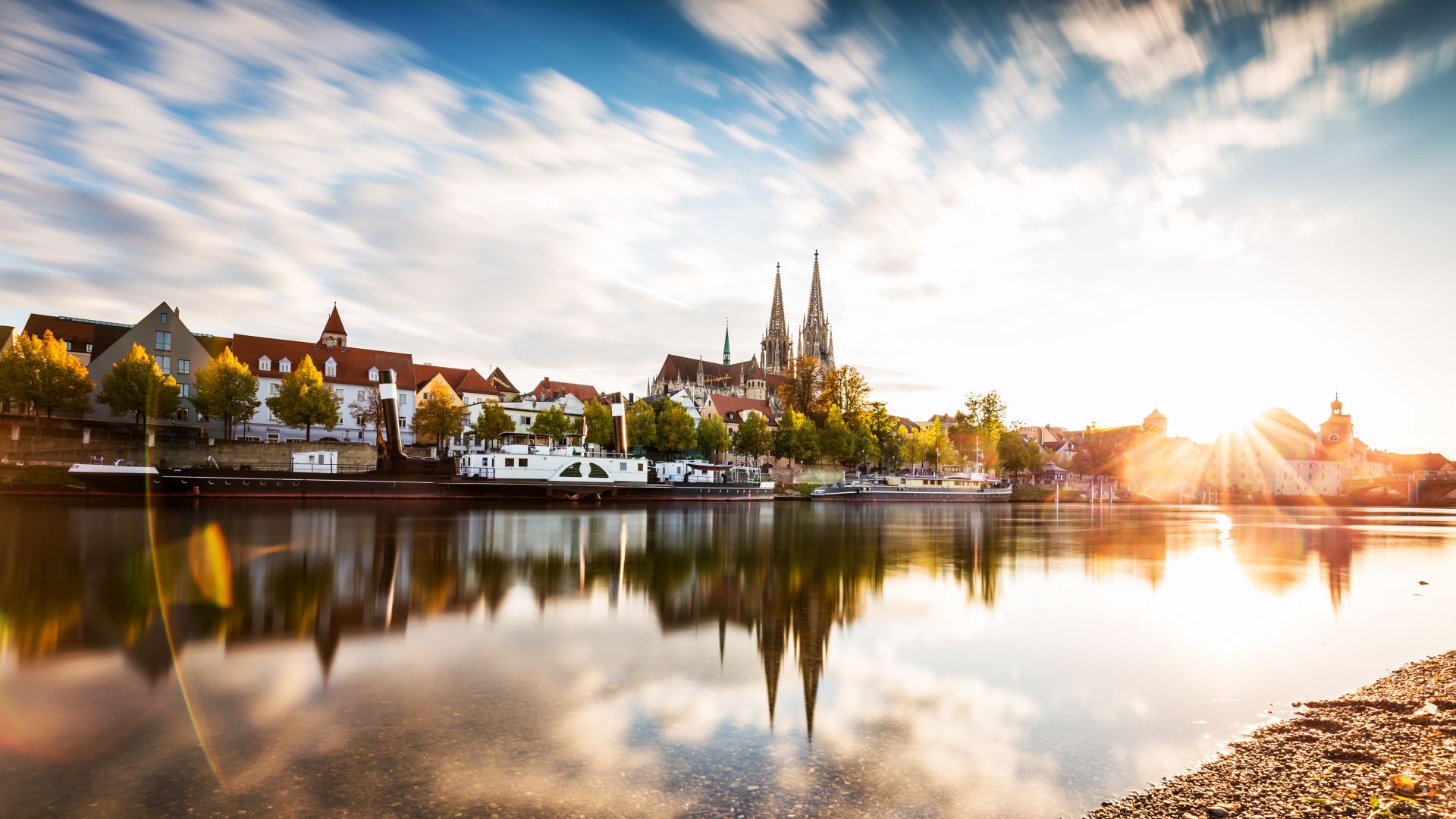 Regensburg: Donau und Skyline im Sonnenuntergang
©Getty Images (vertmedia)
Regensburg: Donau und Skyline im Sonnenuntergang
©Getty Images (vertmedia)
¡La vieja Europa! Este puede ser el origen de lo que hasta ahora había sido considerado como “propiedad americana”. Así nos cuenta esta bonita historia de Ratisbona, en Baviera.
La ciudad a orillas del Danubio es una perla en sí misma si quiere adentrarse en una ciudad medieval, siendo su casco antiguo Patrimonio de la Humanidad de la UNESCO. El Steinerne Brücke es considerado el puente más antiguo que se conserva en Alemania y su catedral el edificio sagrado gótico más importante junto a la catedral de Colonia.
Cerca del puente hay un local gastronómico que ya ha sido descrito como el "establecimiento de comida rápida más antiguo del mundo". En 1146, cuando se terminó el puente, se dice que se abrió allí una cocina, la actual "Wurstkuchl".
Se dice que incluso los trabajadores que participaron en la construcción de la catedral se proveían de un bocadillo rápido - carne hervida – de este lugar. Hoy en día sirven salchichas de Ratisbona con chucrut y mostaza, y se alegran de recibir a muchos invitados internacionales.
Hablamos de la Bratwurst como un icono alemán gastronómico
 fried sausage in Frying Pan
©gettyimages (Anfisa Kameneva)
fried sausage in Frying Pan
©gettyimages (Anfisa Kameneva)
La Bratwurst es todo un icono alemán. Según la asociación de carniceros, los alemanes consumen alrededor de tres kilos per cápita cada año. Sin embargo, no es un invento alemán ya que los antiguos griegos asaban salchichas sobre brasas. Pero los alemanes han asimilado, por así decirlo, la salchicha como un bien cultural de su alimentación.
La Thüringer Rostbratwurst y la Nürnberger Bratwurst son términos protegidos, así como la Coburger Bratwurst. En Hesse se conocen buenas recetas, tanto del este como del oeste. Y la palabra "Bratwurst" ha sido incorporada al inglés, pronunciada como "brädwurst". "El mundo entero nos define a través de la salchicha, la Bratwurst es nuestra especialidad más famosa" - esto es lo que el 1er Museo Alemán de Bratwurst en Mühlhausen, Turingia.
Normalmente, una salchicha tiene unos 20 centímetros de longitud, pero se dice que, en el año 1951, un carnicero de Núremberg hizo una que alcanzaba los 39 metros. El registro posterior data de 1999, cuando un equipo de carniceros cerca de Landshut embalsamó carne de salchicha de 30 cerdos en un granero especialmente convertido. Al final, la salchicha tenía 5888 metros de largo según los datos del museo.
Berlín visto desde el espacio - la división alemana sigue iluminada por la noche
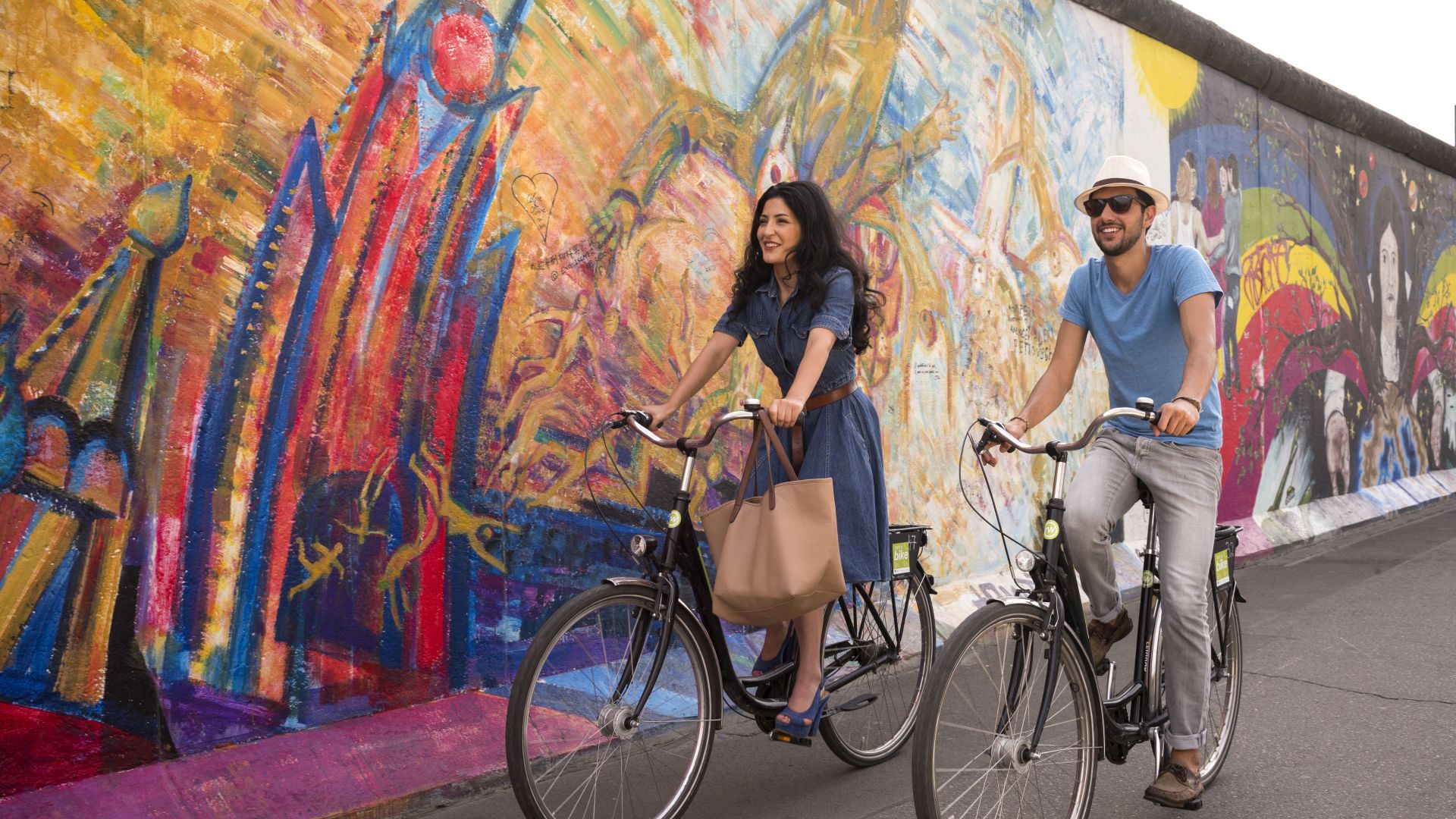 Berlin: East Side Gallery am Berliner Mauerweg
©visitBerlin (Philip Koschel)
Berlin: East Side Gallery am Berliner Mauerweg
©visitBerlin (Philip Koschel)
El Muro cayó en 1989, y desde entonces Berlín se ha unido cada vez más. Los turistas cruzan la antigua frontera sin problemas, y los ciclistas pueden relajarse en el carril bici del Muro. Pero desde el espacio exterior la antigua división de Berlín se hace visible de nuevo en noches claras. Las imágenes del satélite muestran como el Oeste brilla con una luz blanca azulada y el Este con un amarillo más cálido.
Diferentes sistemas de iluminación, como las farolas, permiten echar un vistazo al pasado. En el este, brillan muchas lámparas de vapor de sodio, mientras que, en la parte occidental de Berlín, brillan las lámparas de vapor de mercurio y los tubos fluorescentes.
Donde el desorden reina: la reinvención de la selva
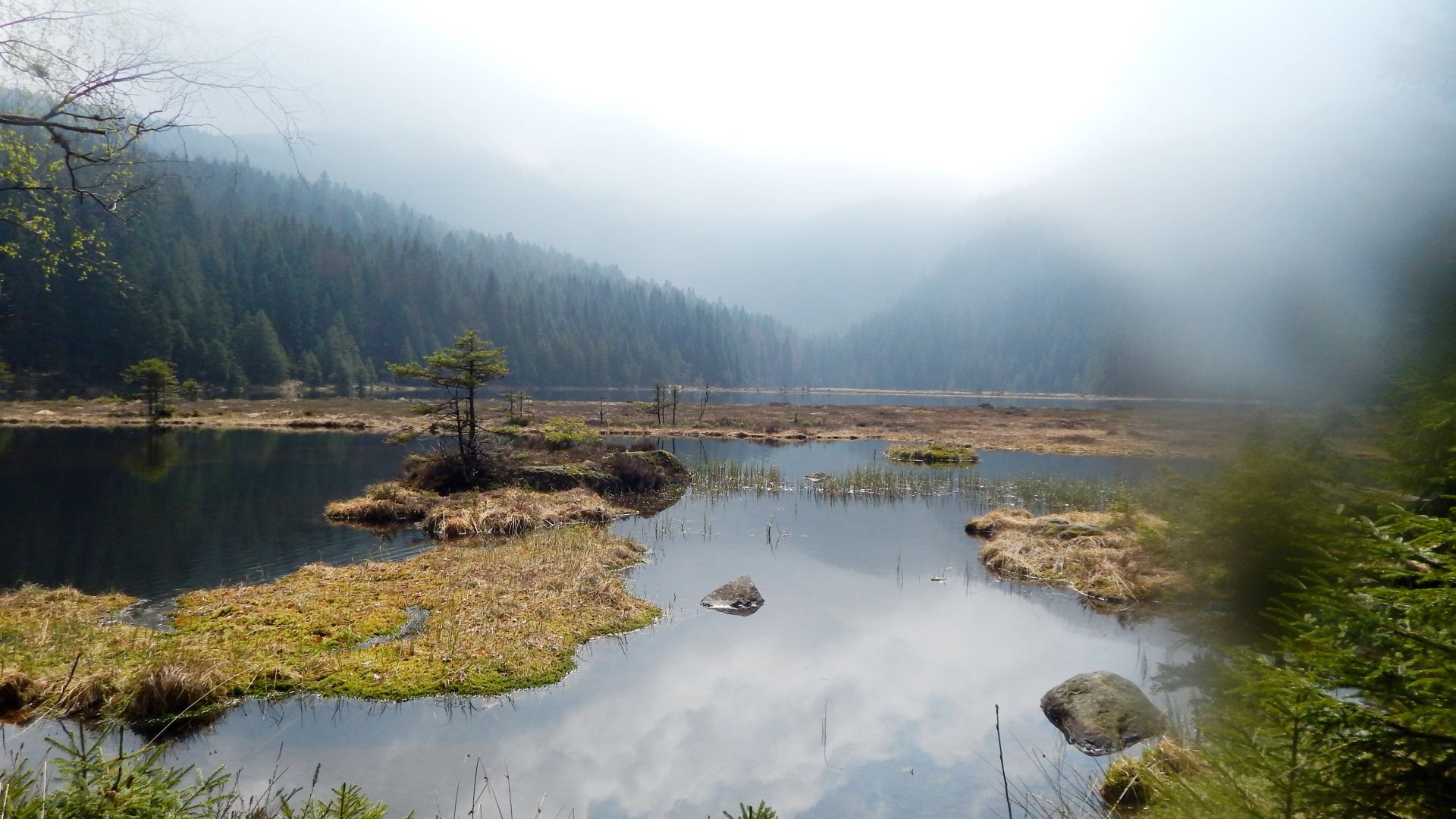 Bavarian Forest Nature Park: Lake Arber
©VDN - Verband Deutscher Naturparke e.V. (Isabelle Auer)
Bavarian Forest Nature Park: Lake Arber
©VDN - Verband Deutscher Naturparke e.V. (Isabelle Auer)
Alrededor de un tercio de Alemania está cubierto de bosques, siendo una alta proporción para una nación industrial densamente poblada. ¿Alguien esperaría encontrarse con un bosque primitivo aquí? ¡No!
Pero sí que los hay: en el Parque Nacional del Bosque de Baviera, a dos horas de viaje al noreste de Munich, no se han llevado a cabo operaciones forestales desde hace décadas. En 1983, el Ministro de Agricultura de Baviera, Hans Eisenmann, decidió dejar los árboles que habían sido derribados por una tormenta. Dijo que una "selva para nuestros hijos y nietos" debería crearse una vez más en el parque nacional.
Junto con el adyacente Parque Nacional de Umava, en el lado checo, el Parque Nacional del Bosque Bávaro es la mayor reserva forestal estrictamente protegida de Europa Central. La administración del parque ofrece paseos por la selva en el bosque natural recuperado. También el Bosque primigenio de Sababurgo, que forma parte del bosque Reinhard en Hesse, en el corazón de Alemania, no ha sido transformado desde hace más de 100 años.
Tanto en casa como en la carretera - La caravana moderna, un invento alemán
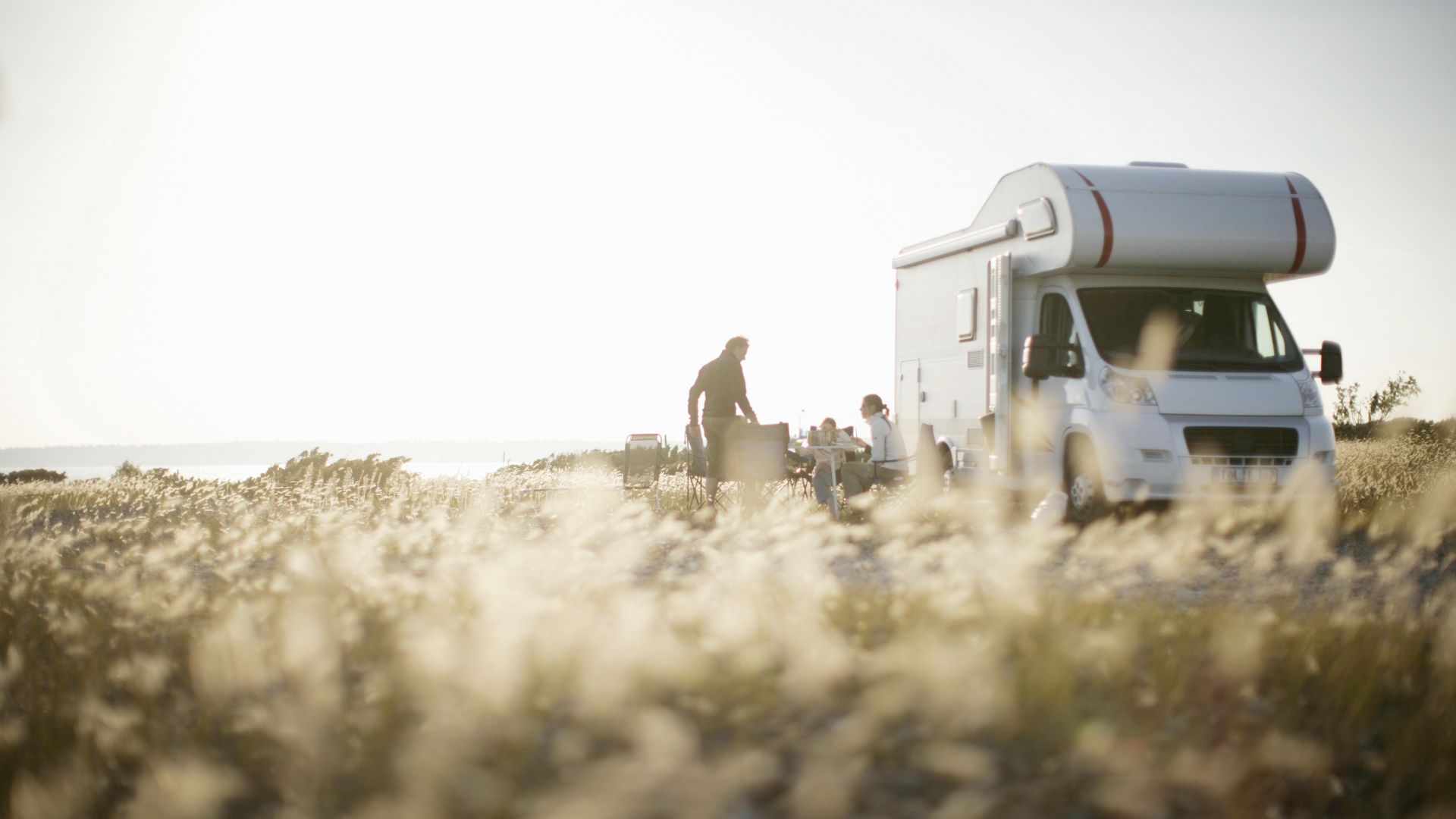 Baltic Sea: Motor caravan in the dunes
©Lookphotos (Jan Greune)
Baltic Sea: Motor caravan in the dunes
©Lookphotos (Jan Greune)
Ya en la Inglaterra del siglo XIX, caballos o bueyes arrastraban lujosas caravanas. Pero la caravana, tal y como la usan hoy en día los turistas de camping de todo el mundo, es un invento alemán.
A principios de los años 30, al suabo Arist Dethleffs, hijo de un fabricante de látigos, y a su prometida Fridel Edelmann, pintora, se les ocurrió una idea: ¿por qué no construir un estudio móvil? El resultado fue: un vehículo de un solo eje revestido de madera con una litera, una sala de estar y una cocina. No estaba previsto que se usara como coche turístico. Pero el concepto funcionó.
Sólo en Alemania se registran hoy en día unas 700.000 caravanas, y el número va en aumento. Las vacaciones de camping en Alemania también se están volviendo cada vez más populares. Las estadísticas lo demuestran.
Una cosa es segura: hay 25.000 castillos en Alemania
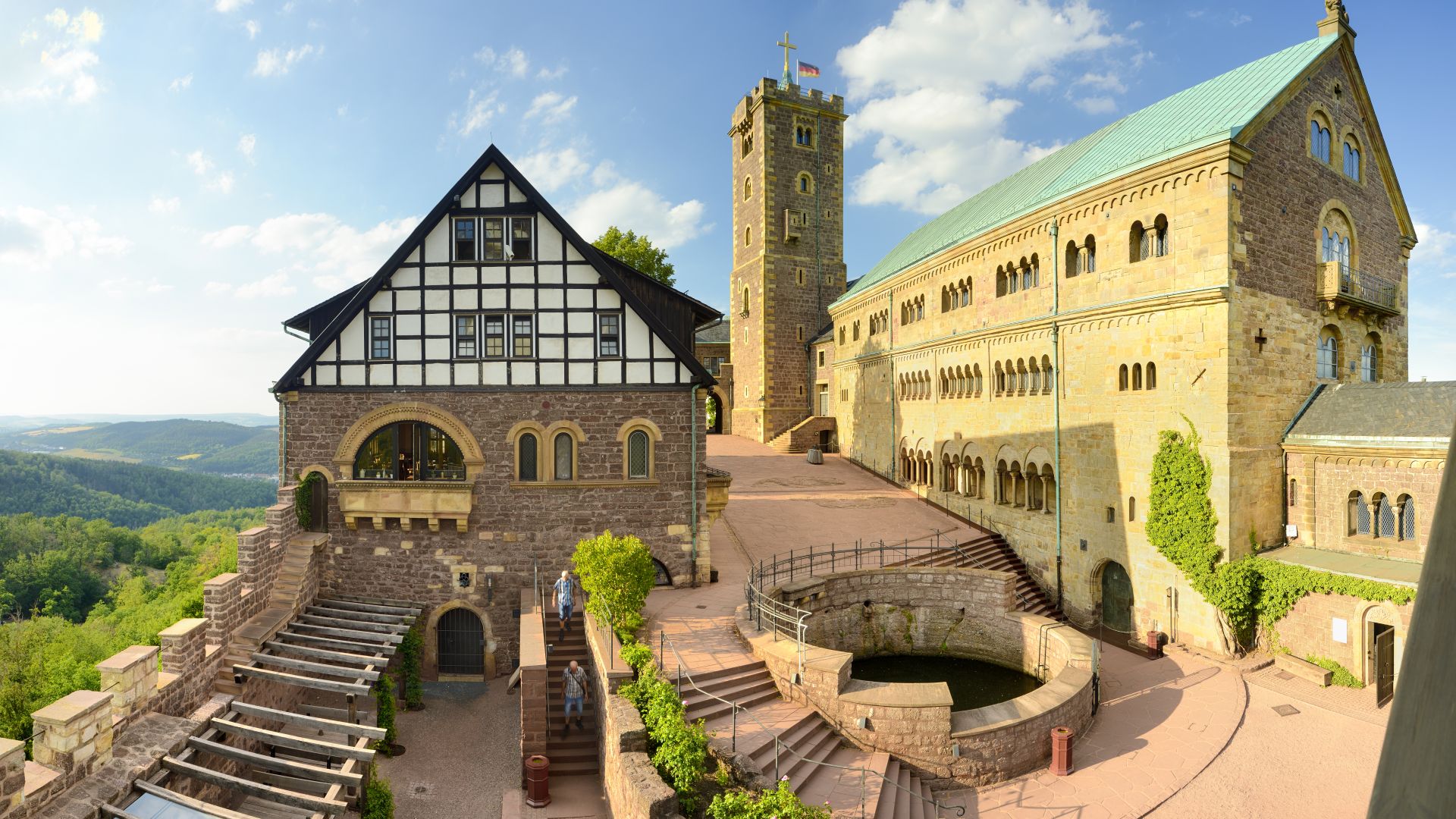 Eisenach: Patio interior del Castillo de Wartburg, Patrimonio Mundial de la UNESCO
©DZT (Francesco Carovillano)
Eisenach: Patio interior del Castillo de Wartburg, Patrimonio Mundial de la UNESCO
©DZT (Francesco Carovillano)
Los aficionados a los castillos encontrarán en Alemania una selección muy variada: hay algunos sitios muy inusuales para descubrir, como por ejemplo el bosque de Turingia, que alberga un edificio sorprendente. Allí, es donde se encuentra el castillo más famoso del país: en Wartburg, cerca de Eisenach, donde el reformador Martín Lutero tradujo el Nuevo Testamento al alemán por primera vez.
La densidad de castillos también es alta en el estado federal de Sajonia. Se pueden encontrar bellos complejos en el impresionante paisaje de Jura de Suabia, en el suroeste de Alemania, y en Münsterland y en el Bajo Rin, donde hay castillos que se encuentran rodeados de fosos. Pero la región más dotada sigue siendo el Valle del Medio Rin en el oeste de la República.
Entre Bingen y Coblenza, 40 castillos bien conservados están alineados a lo largo de 60 kilómetros. Así, el "Valle del Rin Superior Medio" es considerado el primer paisaje cultural alemán, desde junio de 2002 que fue incluido en la Lista del Patrimonio Mundial de la UNESCO.
El número de 25.000 castillos es una estimación, no existen todavía estadísticas. El "Instituto Europeo de Castillos" está actualmente en proceso de Base de datos para poderlo decir con exactitud. No sólo se registran castillos bien conservados, sino también ruinas o castillos que sólo están documentados en fuentes históricas y que aún no han sido encontrados por un arqueólogo.
Did you know...? - Germany's surprising facts
Close your eyes and let yourself be acoustically enchanted by the diverse impressions on your journey through Germany!
Intro with music:
“Experience Germany – A Surprising Journey of Discovery”
Welcome to the German capital! Everyone knows the Brandenburg Gate, the Reichstag and the Berlin Wall. But did you know that there are 2,500 bridges in Berlin? Four times more than in Venice. And each one has its charm, says native Berliner Sylvia Teschke.
OST Sylvia Teschke, Berlin: Bridges
Woman: The Oberbaum Bridge that crosses the Spree is simply spectacular at sunset. The Admiral Bridge in Kreuzberg is a meeting point for young people who like to party there in the evenings. The Glienicke Bridge was known as a place where captured spies would be exchanged. There are small bridges towards Spandau and Reinickendorf that are very close to nature: Herons, swans, ducks, there are also beavers in the rivers of Berlin.
Beavers, squirrels and red deer are also native to Saarbrücken, the state capital of Saarland. Birgit Grauvogel from Tourismus Zentrale Saarland explains that this is because there is a primeval forest at the gates of the city, close to the French border.
OST Birgit Grauvogel, Saarland: Primeval forest
Woman: A primeval forest is supposed to develop freely without human intervention. Trees are no longer cut down and the fact that it looks so untidy is intentional, even the dead wood, which is left for microorganisms and insects. It is a primeval forest that develops over 10, 20 years, just as it would naturally do at this latitude.
The far north of Germany is also more than just beaches, dikes and lighthouses. Philipp Queiser from Schleswig-Holstein Tourismus even compares the jungle-like landscape around Lübeck with that of the Amazon.
OST Philipp Queiser, Tourismus-Agentur Schleswig-Holstein: Wakenitz
Man: The Wakenitz flows from the Ratzeburge Lake on the right side of the Trave to Lübeck and because of its untouched nature that is like a primeval forest, the small river has come to be called the Amazon of the North. What does it look like? Like the Amazon: You see green all around you and in the middle there is a lot of water. There are no rapids, but instead there are water lilies and irises. There are passages along the Wakenitz that are reminiscent of the swamps of the southern states of the US.
And anyone who thinks the American Space Center in the swamps of Florida is the only center of international space travel has not yet been to Bremen, says Maike Bialek from Wirtschaftsförderung Bremen.
OST Maike Bialek, Bremen: Space travel
Woman: This is where the European part of the International Space Station was assembled – the upper level of the Ariana rocket. We have great companies, some of which you can visit, that research space and create exciting things like small planetary rovers. A rover is a small vehicle that travels around in space on a comet and takes rock samples.
Even the Town Musicians of Bremen wanted to reach for the sky. The largest Trojan horse in the world, however, is in the Hanseatic town of Stendal in the Altmark region, says Barbara Weinert-Nachbagauer from Sachsen-Anhalt Tourismus.
OST Weinert: Trojan horse
Woman: It is built of wood and it is huge: about 16 meters tall, 13 meters long and almost 10 meters wide. You can walk inside and feel like you are in ancient times, entering unknown territory. The Trojan horse stands in the family and children’s park of the Winckelmann Museum and it really is eye-catching.
Visitors should also see the Bergisches Land region up close. Because it is so hilly, the city of Wuppertal, which has a total of 517 stairways, is the city with the most stairways in Germany, explains Silke Dames from Tourismus NRW.
OST Silke Dames, Wuppertal, North Rhine-Westphalia: Stairways
These really capture your attention! For example, there is the Holstein Staircase, an open stairway from the beginning of the 19th century. It is now bright and colorful: the steps were painted blue, pink and green, and it has become a real Instagram pilgrimage point. Another stairway is Tippen-Tappen-Tönchen. It connects the Ölberg and the Luisenviertel districts. It is definitely worth a visit!
These help you get from one point to another without a car. Everyone knows that hikers and cross-country skiers are also welcome in the Thuringian Forest, but Thuringian sports journalist Katja Bauroth has a truly underground secret tip for cyclists in Kamsdorf, a district of Unterwellenborn.
OST Katja Bauroth: Mine for bikers
Woman: There is a disused mine there. Biking fans have the opportunity to ride through the tunnels on mountain bikes or, lately, also electric motorcycles. They can do this, for example, with professional guides and the best equipment. It’s a lot of fun, and I think it’s something very special about Thuringia.
What is very special in Frankfurt am Main is of course the largest German airport, the stock exchange and frankfurters. But few foreign visitors know that the Hessian capital has the newest old town in the world, according to Herbert Lang from Hessen Tourismus.
OST Herbert Lang, Frankfurt: Old/new town
Man: After the Second World War, Frankfurt was very badly destroyed. Until then there was one of the largest and most beautiful half-timbered complexes in Frankfurt, and in the early 2000s the old town was rebuilt. It’s exciting because there are 15 reconstructions that remain true to the original buildings and there are also 20 new buildings, so it’s quite an exciting mix – and that’s why it’s the newest old town in the world.
The old town of Görlitz in Saxony, in contrast, is the largest contiguous landmark area in Germany, with more than 4,000 listed buildings from five different eras, explains Veronika Hiebl from Tourismus Marketing Gesellschaft Sachsen.
OST Veronika Hiebl, Görlitz/Saxony
Woman: The entire city center is a single monument. Many of the tall buildings in the city center, cultural institutions and also department stores are listed buildings and reflect the five different eras spanning centuries. They have been beautifully restored. This is what makes it so fascinating to stroll through the old town of Görlitz.
If you’re looking for a good time after a walk through the city, you’ll find it in Brandenburg. This is because every year the state-recognized resort of Werda-Havel near Potsdam hosts the largest folk festival in the eastern states of Germany. Patrick Kastner from Reiseland Brandenburg invites you to the tree blossom festival.
OST Patrick Kastner, Brandenburg: Tree blossom festival
Man: The Tree Blossom Festival takes place at the start of spring. In Werder this is five days earlier than in the surrounding area, because there is a very mild climate there and the northernmost licensed vineyard in the world. People sit on wooden benches in the orchards and enjoy the many products of the region. You can go on tours by horse-drawn carriage. It is a well-rounded experience, especially because of the beautiful historic old town and its location by the water.
After all, did you know what the city name Werder means? Island on the river.
OUTRO